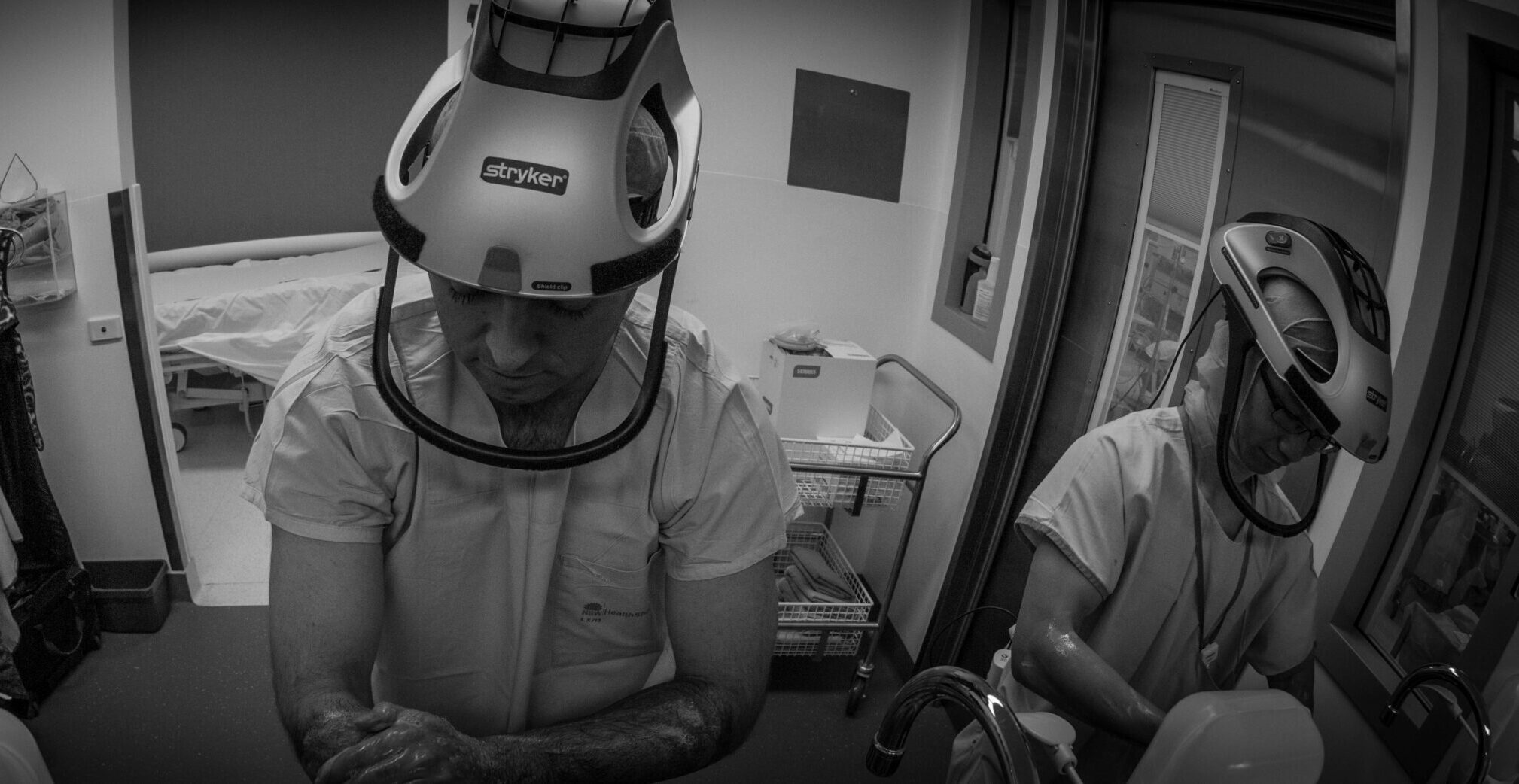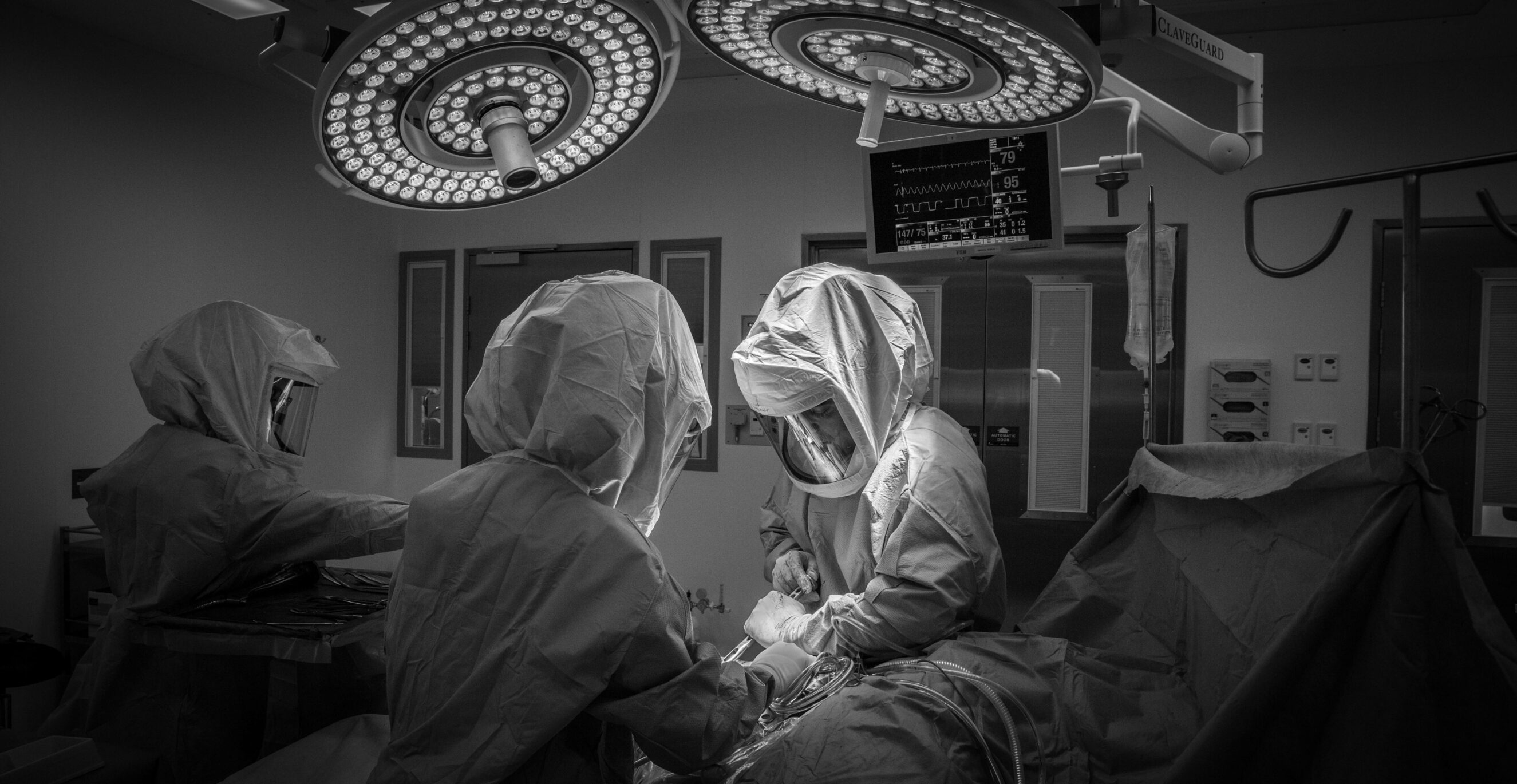Revision Anterior Cruciate Ligament (ACL) Reconstruction is a surgical procedure performed to address the failure of an initial ACL repair.

Our Revision Surgery Specialist
Dr Peter Kilby
Orthopaedic Surgeon
FRACS FAOrthA Appointments: 02 6331 8354 More About Dr Kilby
Why is Revision ACL Reconstruction Necessary?

The ACL, or anterior cruciate ligament, is a thick band of tissue connecting the femur (thigh bone) to the tibia (shin bone) in the knee. It is a commonly torn ligament in the knee and is usually torn due to a sudden twisting or jarring motion.
Revision ACL reconstruction becomes necessary under the following circumstances:
Failure of Initial Reconstruction: This can occur due to improper healing, incorrect graft placement, or inadequate rehabilitation.
Graft failure: Can occur when the body does not accept the graft, leading to its deterioration or malfunction.
Re-injury: A new injury to the reconstructed ACL can necessitate another surgery.
Loosening or Breakage: The loosening or breakage of the initial graft material can compromise knee stability.
Persistent Instability: If the knee remains unstable after initial surgery, a revision may be required to restore proper function.
Types of Revision Surgeries
Revision ACL reconstruction can vary depending on the cause of failure and the individual’s specific needs:
Graft Replacement: Involves replacing the failed graft with a new one, which can be autograft (from the patient) or allograft (donor tissue).
Bone-Tunnel Widening Management: In cases where previous surgery has led to bone tunnel widening, this approach involves techniques to fill and stabilise these tunnels, such as bone grafting, before a new ACL reconstruction is performed.
Revision with Extra-articular Augmentation: Involves not only replacing the failed ACL graft but also reinforcing the reconstruction with additional support outside the joint to enhance stability.
Combined or Multiligament Revision: Addresses situations where multiple knee ligaments are damaged or previously reconstructed ligaments have failed. This complex procedure involves repairing or reconstructing several ligaments in the knee.
Graft Fixation Revision: Focuses on improving the fixation of the ACL graft to the bone if poor fixation contributed to the initial failure. This might involve different fixation devices or techniques.
Patients must engage actively in their recovery process, adhere strictly to their rehabilitation regimen, and maintain open communication with their healthcare team to optimise the outcomes of their revision ACL reconstruction.
Why Have Revision Surgery?

The primary objectives of revision ACL reconstruction include:
- Restoring stability to the knee joint.
- Alleviating pain and discomfort.
- Enhancing the overall functionality and strength of the knee.
- Preventing further injury and degenerative changes in the knee joint.
How Long Does The Revision ACL Reconstruction take?
The length of a revision ACL reconstruction can vary:
- Typically, the surgery takes longer than the initial ACL reconstruction due to the complexity of correcting previous issues.
- The procedure can last between 1-3 hours, depending on the extent of the revision required.
What Is The Recovery Time For A Revision ACL Reconstruction?
Recovery from revision ACL reconstruction is generally longer than the initial surgery.
Hospital Stay: Patients typically spend a brief period in the hospital following a revision ACL reconstruction, usually ranging from a few hours to a couple of days. This stay allows medical staff to manage initial postoperative pain, monitor for complications, and begin early mobilisation strategies.
Immediate Postoperative Period: The first few weeks after surgery are crucial for healing. During this period, patients may need to use crutches and wear a knee brace to protect the reconstructed ligament and support the knee. Pain management, reduction of swelling, and prevention of blood clots are primary focuses. Patients will commence gentle range-of-motion exercises as advised by their healthcare provider to prevent stiffness and encourage circulation.
You can usually expect to return to work between 2-6 weeks after the operation. However, individuals employed in more physically demanding roles will require an extended period for recovery.
Full Recovery: Full recovery from a revision ACL reconstruction typically takes longer than after a primary ACL surgery, often ranging from 6-12 months. This extended period accounts for the more complex nature of revision procedures and the body’s slower response to healing after a second surgery. During this time, patients undergo a structured physical therapy program aimed at gradually restoring knee strength, flexibility, and stability. Return to full activities, including sports, is usually phased and should only be attempted once clearance is given by the healthcare team.
Long-Term Outcomes: The long-term outcomes of a revision ACL reconstruction can vary based on individual factors, including the type of graft used, the patient’s adherence to rehabilitation protocols, and the knee’s overall condition. While many patients achieve successful outcomes with improved knee stability and function, it is crucial to acknowledge that the prognosis may be more guarded compared to a primary ACL reconstruction. Patients are encouraged to maintain a healthy lifestyle, continue with regular knee-strengthening exercises, and follow their surgeon’s advice regarding knee protection to prolong the success of the surgery.
How Can You Speed Up Recovery From A Revision ACL Reconstruction?
Optimising recovery after a revision ACL reconstruction involves proactive measures both before and after surgery. By preparing adequately and following postoperative guidelines diligently, patients can enhance their healing process and return to normal activities more swiftly.
Before Surgery
Pre-operative Physical Conditioning: Engage in pre-surgery exercises to strengthen the muscles around the knee. Stronger muscles can support the joint better and facilitate a quicker recovery post-surgery.
Nutritional Planning: Adopt a balanced diet rich in vitamins, minerals, and protein to bolster your body’s healing capabilities. Proper nutrition can help reduce recovery time.
Mental Preparation: Understand the procedure, recovery expectations, and the rehabilitation process. Mental readiness can significantly impact your recovery and adherence to post-surgery protocols.
Arrange for Assistance: Organise help for the initial post-surgery period. Having support for daily tasks can allow you to focus more on your recovery and rehabilitation.
After Surgery
Adhere to Rehabilitation Guidelines: Follow your healthcare provider or physical therapist instructions meticulously. A tailored rehabilitation program is critical for restoring knee function and strength.
Pain Management: Manage your pain according to your doctor’s advice. Effective pain control can enable you to participate more actively in rehabilitation and daily activities.
Avoid Overexertion: While staying active is important, avoid overdoing exercises or activities that can strain the newly reconstructed ACL. Listen to your body and your healthcare providers.
Regular Follow-Up Appointments: Attend all scheduled appointments with your healthcare team. These are vital for monitoring your progress and addressing any concerns promptly.
Ice and Elevation: Regularly apply ice to the knee and keep it elevated to reduce swelling and pain. This can aid in faster healing and increased comfort.
Stay Active Within Limits: Engage in low-impact activities, such as walking or cycling, as recommended by your physical therapist. This can help maintain muscle strength and joint mobility without compromising the healing graft.
Maintain a Healthy Weight: Can reduce stress on the knee and aid in a quicker recovery. Follow a healthy diet and engage in approved physical activities.
